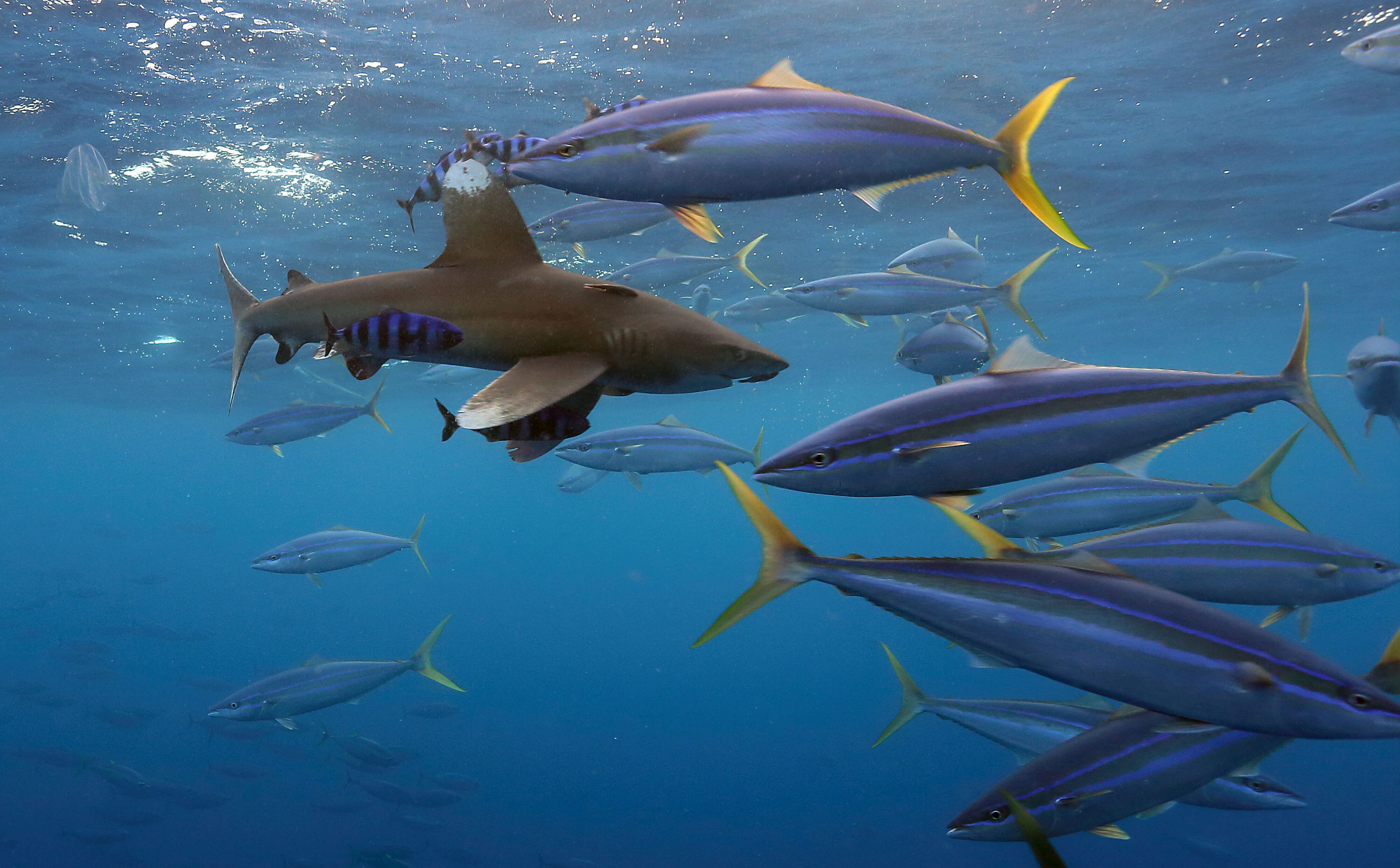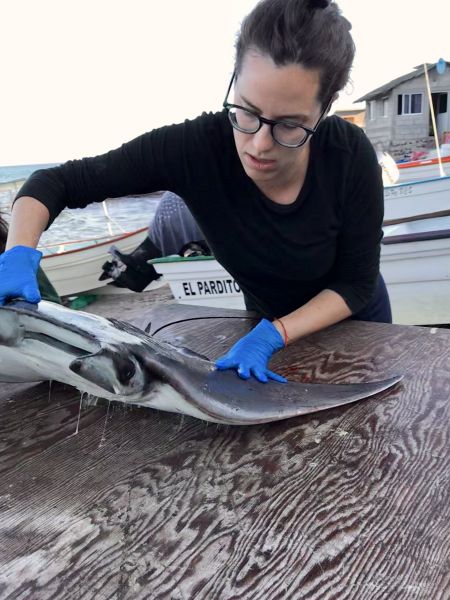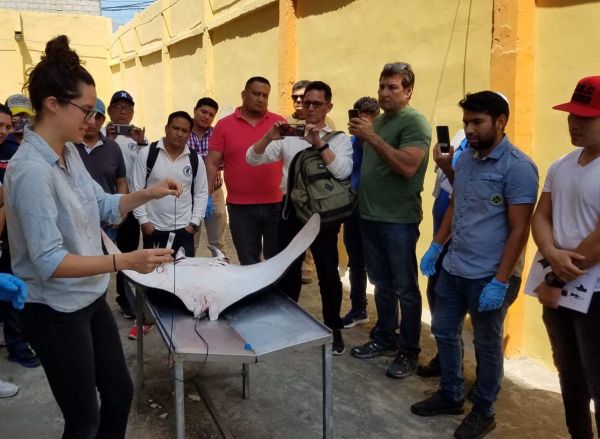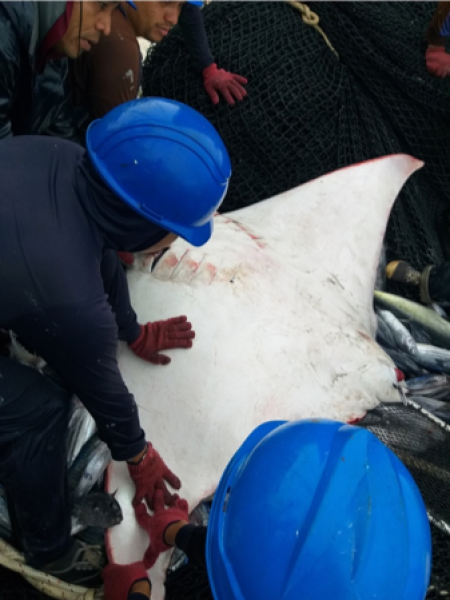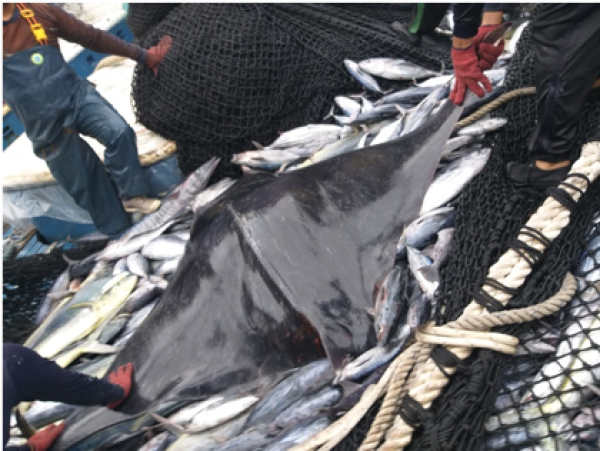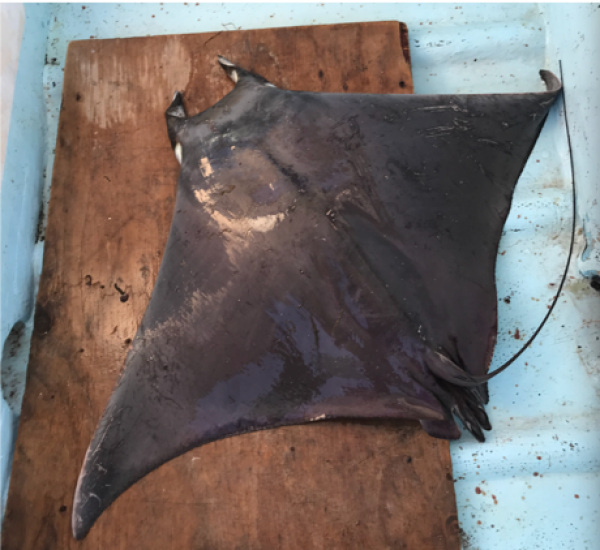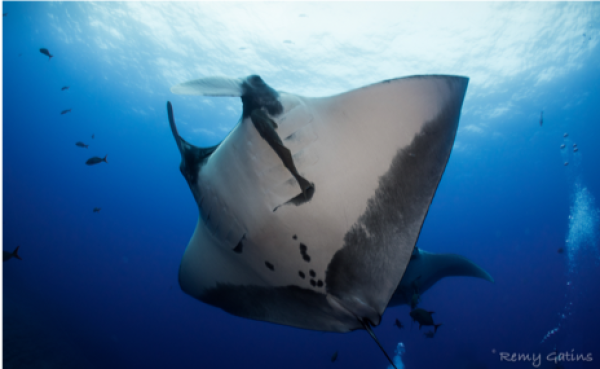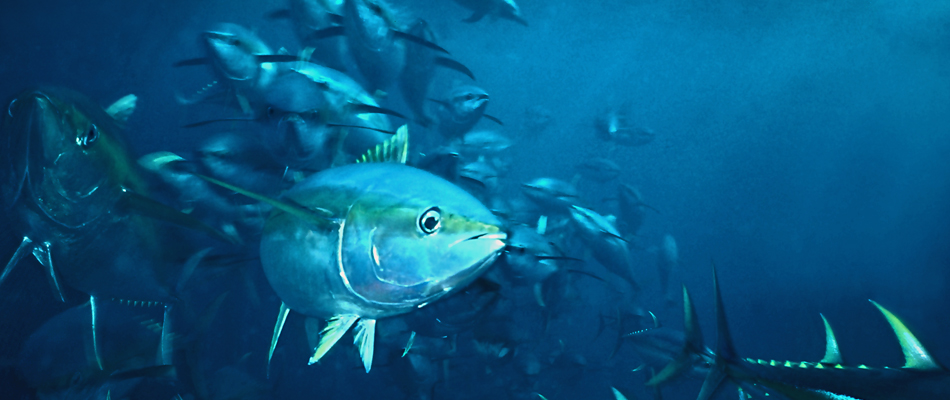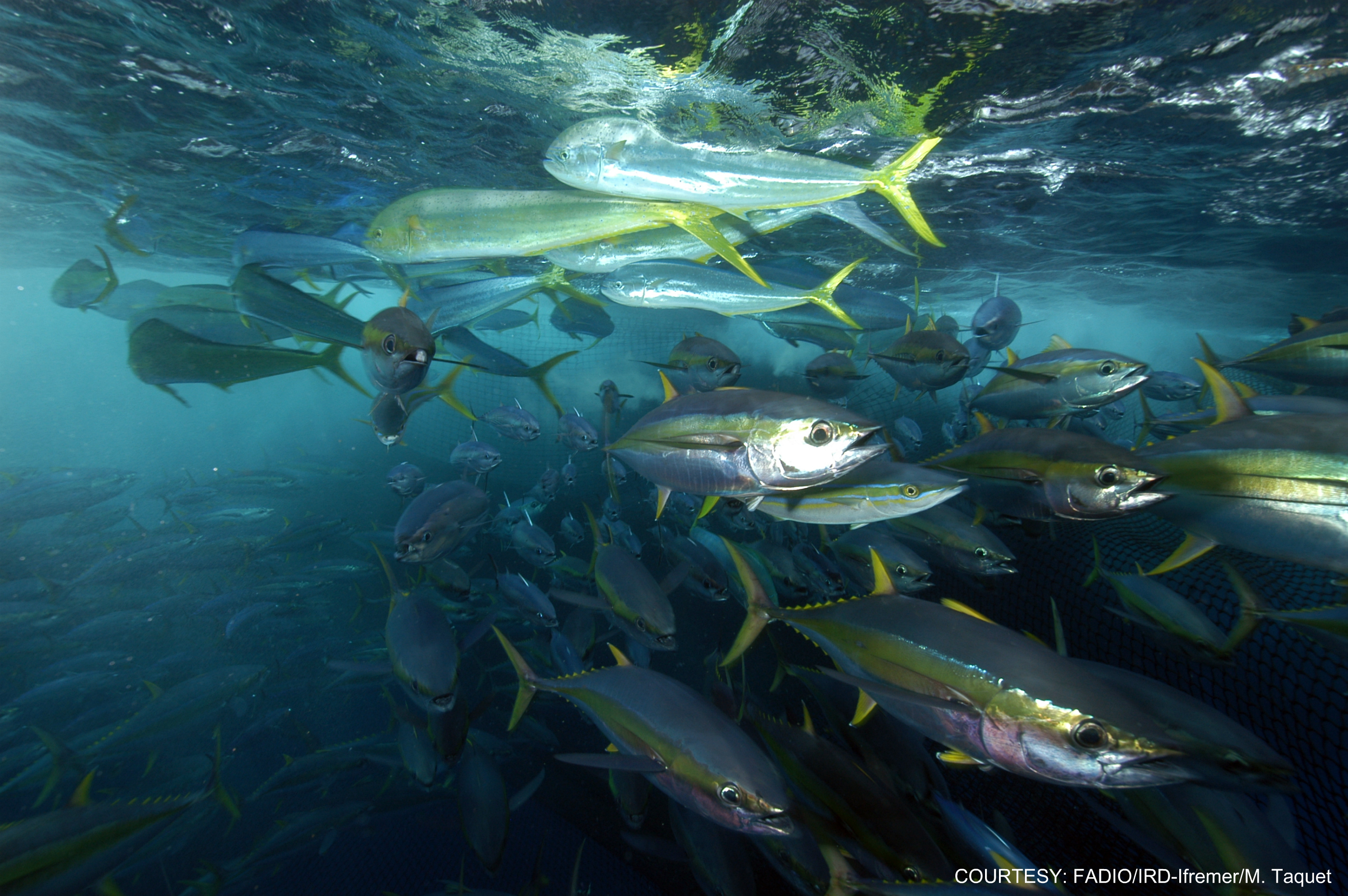Approximately 13,000 mobulid rays are captured in global tune purse-seine fisheries each year. In the Eastern Tropical Pacific
purse seine fishery in particular, where
observers record 100% of tuna fishing
sets, about one in every six sets contains a mobulid ray.
This bycatch threatens mobulid populations. It also presents an enormous
conservation opportunity. If we can mitigate mobulid bycatch in tuna fisheries, we can make huge gains for this at-risk and charismatic
species.
Collaboration for Conservation
I spent much of my childhood in a small fishing village on an island in the Gulf of Maine, splashing through tide pools and watching lobstermen haul in their traps. Seeing how carefully managed fisheries can provide sustainable livelihoods, local food, and rich culture intrigued me. But it was also an introduction to the complex problems that can come with fishing.
After a few years spent covering marine conservation as an environmental journalist, I returned to academia — and to my roots in fisheries. At the Conservation Action Lab at the University of California, Santa Cruz (UCSC), I’m working on an interdisciplinary dissertation focused on mobulid ray bycatch in fisheries.
Working with onboard observers, my collaborators and I — including the Manta Trust, the Monterey Bay Aquarium, and the Molecular Ecology of Fishes Lab at UCSC — have been collecting small tissue samples of mobulid tails. From these tiny tails, we can unlock a world of information about rays’ population structure, genetic diversity, and a crucial metric called “effective population size.” These metrics give us a sense of which populations may be most at risk, and where we need to focus conservation action first.
Finally, I am also drawing on the social sciences to produce a policy gap analysis, which can help inform how changes in fishing policy could reduce bycatch pressure on vulnerable
shark and ray species.
Co-creating Fisheries Solutions
Through my work with tuna purse-seine observers, who send footage of mobulid ray releases, my collaborators and I have noticed that crews’ release methods for mobulids range widely: from simply releasing animals by hand, to using a modified net to set manta rays free, and even to employing elaborate hand-made “manta stretchers.”
These methods offer potentially low-cost but effective ways to release animals quickly and with the least damage possible — factors likely to increase mobulid survival rates and lessen the impact of bycatch on their populations.
While these innovations appear promising, none have been formally developed or thoroughly tested. My Grand-Prize-winning project in the
ISSF Seafood Sustainability Contest seeks to work with vessel skippers and fisheries observers to incentivize the development and refinement of these methods.
Over the next year, we will be hosting workshops with purse-seine skippers, observers, and scientists, as well as with the
Inter-American Tropical Tuna Commission (IATTC). At these workshops, we will work to develop prototypes and methodologies to avoid catching mobulids in the first place — or to reduce the rate of mortality for bycaught mobulids. Working in small teams, participants will vote to identify the most promising designs, and two of these designs will be selected for implementation on board.
Testing for Conservation Success
Finally, I will work with a group of Ecuadorian fishing firms, IATTC, and vessels to identify eligible observers and skippers in the Eastern Pacific who can implement and test these designs across one fishing season.
We will train observers at the workshops to deploy ray tags to measure post-release mortality — in other words, to learn whether these bycatch “interventions” are reducing the chance that mobulids will die as a result of bycatch. With this data, we can assess whether these designs are effective, and plan for scaling them across the Eastern Pacific and elsewhere.
Scientists, fisheries managers, and the fishing industry can work together to co-create and implement solutions for threatened bycatch species like mobulids. With the generous support of ISSF, we plan to use this approach to protect threatened manta rays from fisheries bycatch, and ensure that we protect these iconic species before it’s too late.
